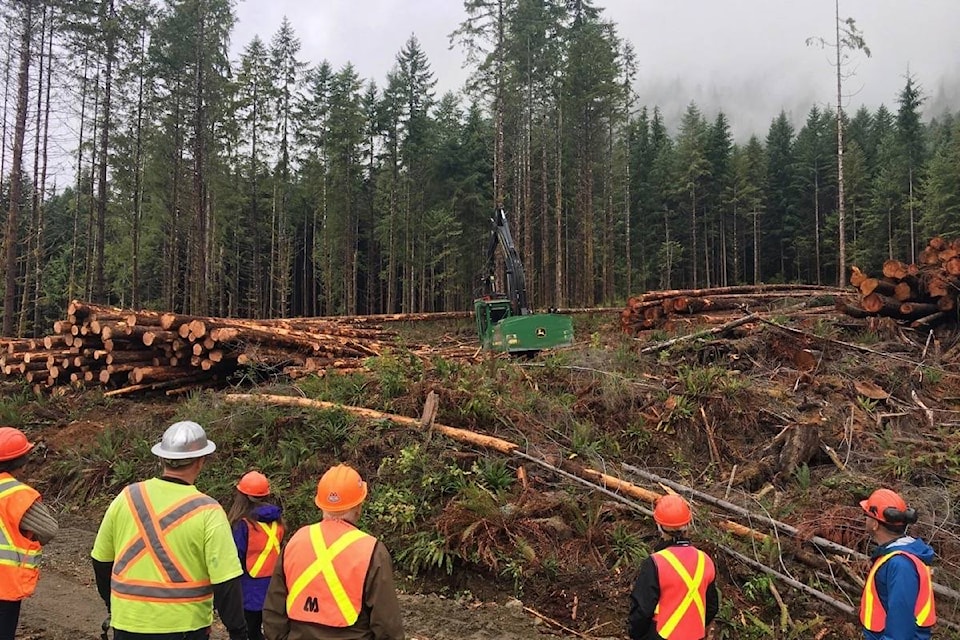Part one of a three-part series regarding the Barkley Community Forest
From the Barkley Community Forest Corporation (BCFC) boardroom within the Toquaht Nation government building on Ucluelet’s Peninsula Road, retired professional forester Ken Matthews discloses how the local community forest near Maggie Lake has begun the long, arduous process of change.
Matthews, a BCFC director appointed to the by Toquaht, flips through a series of reserve network maps detailing biogeoclimatic ecosystem classification, forest age, slope classes, riparian reserves, Marbled Murrelet habitat and visual landscape.
As part of the strategic planning process, BCFC underwent an analysis of all its roughly 6,700 hectares of terrain. A new general manager will also be announced in early August.
Matthews slaps a print copy of the ‘Modernizing Forest Policy in British Columbia’ paper on the table. He red flags two key points: Indigenous Nations participation and forest stumpage rates.
“Currently, community forests get a big break on stumpage because the savings are meant to be returned to the community for community projects. This may change,” he says.
Matthews said he believes the Allowable Annual Cut (AAC) for the BCL is “very likely to drop” in compared with the 27,000 cubic metres of timber they are currently allowed to take (approximately 900 logging trucks worth of wood).
| BCFC board members Ken Matthews and Terry Smith outside Toquaht Nations government building. |
RELATED: Community forest finally realized in Ucluelet
This spring, BCFC sold 40,000 cubic metres of second growth to Mosaic Forest Management and San Group.
“It’s mostly second-growth hemlock with scattered fir. It will be falled this summer, and should be done by the end of 2021,” said Matthews, adding the net profit from harvesting this timber is projected to be $660,000 (or roughly $16.50 per cubic metre) and that the board will review partner dividends in early 2022.
According to BCFC board president Terry Smith, another 25,000 cubic metres of old growth will be advertised for tender soon as well, bringing the total for the
“The board feels it is appropriate to take advantage of the high value and avoid potential stumpage increases,” Smith wrote in a June 28 annual general meeting report.
Matthews says everything gets replanted.
“We are planting almost exclusively cedar. We plant more trees than we cut,” he said.
A Forest Stewardship Plan is currently up for review on barkleyforest.ca/notices ‘Barkley Community Tenure Draft 2021 FSP’ (July 26 is the feedback deadline), but Matthews notes “it’s very hard to understand if you don’t have experience in the field.”
In part two, we will look at BCFC’s approach to harvesting old growth
nora.omalley@westerlynews.ca
Like us on Facebook and follow us on Twitter
READ: B.C. First Nations restrict access to territory in wake of forestry standoffs
READ: Watchdog: logging practices put Vancouver Island old growth, biodiversity at risk
